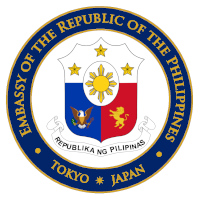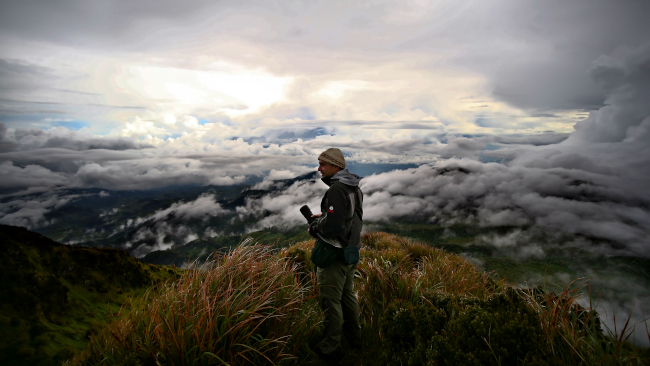Updated Advisory to the Filipino Community in Japan
April 21, 2011
The Tokyo Metropolitan Government announced today that the level of radioactive iodine measured in the tap water as follows.
Tokyo’s Kanamachi Purification Plant was *ND (Bq/kg). *ND(Not Detected)≦7Bq/Kg
Tokyo’s Asaka Purification Plant was **ND (Bq/kg). **ND(Not Detected)≦6Bq/Kg
Tokyo’s Ozaku Purification Plant was ***ND (Bq/kg). ***ND(Not Detected)≦7Bq/Kg
Tokyo’s Higashimurayama Purification Plant was ****ND (Bq/kg). ****ND(Not Detected)≦2Bq/Kg
These are below the 100 Bq/kg provisional maximum level for consumption by infants (children under one year of age) that the national government set in accordance with the Food Sanitation Act.
Accordingly, there is no need to refrain from having infants drink tap water.
April 20, 2011
The Tokyo Metropolitan Government announced today that the level of radioactive iodine measured in the tap water as follows.
Tokyo’s Kanamachi Purification Plant was *ND (Bq/kg). *ND(Not Detected)≦7Bq/Kg
Tokyo’s Asaka Purification Plant was **ND (Bq/kg). **ND(Not Detected)≦6Bq/Kg
Tokyo’s Ozaku Purification Plant was ***ND (Bq/kg). ***ND(Not Detected)≦7Bq/Kg
Tokyo’s Higashimurayama Purification Plant was ****ND (Bq/kg). ****ND(Not Detected)≦2Bq/Kg
These are below the 100 Bq/kg provisional maximum level for consumption by infants (children under one year of age) that the national government set in accordance with the Food Sanitation Act.
Accordingly, there is no need to refrain from having infants drink tap water.
April 19, 2011
The Tokyo Metropolitan Government announced today that the level of radioactive iodine measured in the tap water as follows.
Tokyo’s Kanamachi Purification Plant was *ND (Bq/kg). *ND(Not Detected)≦7Bq/Kg
Tokyo’s Asaka Purification Plant was **ND (Bq/kg). **ND(Not Detected)≦6Bq/Kg
Tokyo’s Ozaku Purification Plant was ***ND (Bq/kg). ***ND(Not Detected)≦7Bq/Kg
Tokyo’s Higashimurayama Purification Plant was ****ND (Bq/kg). ****ND(Not Detected)≦2Bq/Kg
These are below the 100 Bq/kg provisional maximum level for consumption by infants (children under one year of age) that the national government set in accordance with the Food Sanitation Act.
Accordingly, there is no need to refrain from having infants drink tap water.
18 April 2011
The Tokyo Metropolitan Government announced today that the level of radioactive iodine measured in the tap water as follows.
Tokyo’s Kanamachi Purification Plant was *ND (Bq/kg).
Tokyo’s Asaka Purification Plant was *ND (Bq/kg).
Tokyo’s Ozaku Purification Plant was *ND (Bq/kg).
*ND≦20Bq/Kg
These are below the 100 Bq/kg provisional maximum level for consumption by infants (children under one year of age) that the national government set in accordance with the Food Sanitation Act.
Accordingly, there is no need to refrain from having infants drink tap water.
15 April 2011
The Tokyo Metropolitan Government announced today that the level of radioactive iodine measured in the tap water as follows.
Tokyo’s Kanamachi Purification Plant was *ND (Bq/kg).
Tokyo’s Asaka Purification Plant was *ND (Bq/kg).
Tokyo’s Ozaku Purification Plant was *ND (Bq/kg).
*ND≦20Bq/Kg
These are below the 100 Bq/kg provisional maximum level for consumption by infants (children under one year of age) that the national government set in accordance with the Food Sanitation Act.
Accordingly, there is no need to refrain from having infants drink tap water.
14 April 2011
The Tokyo Metropolitan Government announced today that the level of radioactive iodine measured in the tap water as follows.
Tokyo’s Kanamachi Purification Plant was *ND (Bq/kg).
Tokyo’s Asaka Purification Plant was *ND (Bq/kg).
Tokyo’s Ozaku Purification Plant was *ND (Bq/kg).
*ND≦20Bq/Kg
These are below the 100 Bq/kg provisional maximum level for consumption by infants (children under one year of age) that the national government set in accordance with the Food Sanitation Act.
Accordingly, there is no need to refrain from having infants drink tap water.
13 April 2011
The Tokyo Metropolitan Government announced today that the level of radioactive iodine measured in the tap water as follows.
Tokyo’s Kanamachi Purification Plant was *ND (Bq/kg).
Tokyo’s Asaka Purification Plant was *ND (Bq/kg).
Tokyo’s Ozaku Purification Plant was *ND (Bq/kg).
*ND≦20Bq/Kg
These are below the 100 Bq/kg provisional maximum level for consumption by infants (children under one year of age) that the national government set in accordance with the Food Sanitation Act.
Accordingly, there is no need to refrain from having infants drink tap water.
12 April 2011
The Tokyo Metropolitan Government announced today that the level of radioactive iodine measured in the tap water as follows.
Tokyo’s Kanamachi Purification Plant was *ND (Bq/kg).
Tokyo’s Asaka Purification Plant was *ND (Bq/kg).
Tokyo’s Ozaku Purification Plant was *ND (Bq/kg).
*ND≦20Bq/Kg
These are below the 100 Bq/kg provisional maximum level for consumption by infants (children under one year of age) that the national government set in accordance with the Food Sanitation Act.
Accordingly, there is no need to refrain from having infants drink tap water.
11 April 2011
The Tokyo Metropolitan Government announced today that the level of radioactive iodine measured in the tap water as follows.
Tokyo’s Kanamachi Purification Plant was *ND (Bq/kg).
Tokyo’s Asaka Purification Plant was *ND (Bq/kg).
Tokyo’s Ozaku Purification Plant was *ND (Bq/kg).
*ND≦20Bq/Kg
These are below the 100 Bq/kg provisional maximum level for consumption by infants (children under one year of age) that the national government set in accordance with the Food Sanitation Act.
Accordingly, there is no need to refrain from having infants drink tap water.
08 April 2011
The Tokyo Metropolitan Government announced today that the level of radioactive iodine measured in the tap water as follows.
Tokyo’s Kanamachi Purification Plant was *ND (Bq/kg).
Tokyo’s Asaka Purification Plant was *ND (Bq/kg).
Tokyo’s Ozaku Purification Plant was *ND (Bq/kg).
*ND≦20Bq/Kg
These are below the 100 Bq/kg provisional maximum level for consumption by infants (children under one year of age) that the national government set in accordance with the Food Sanitation Act.
Accordingly, there is no need to refrain from having infants drink tap water.
07 April 2011
The Tokyo Metropolitan Government announced today that the level of radioactive iodine measured in the tap water as follows.
Tokyo’s Kanamachi Purification Plant was *ND (Bq/kg).
Tokyo’s Asaka Purification Plant was *ND (Bq/kg).
Tokyo’s Ozaku Purification Plant was *ND (Bq/kg).
*ND≦20Bq/Kg
These are below the 100 Bq/kg provisional maximum level for consumption by infants (children under one year of age) that the national government set in accordance with the Food Sanitation Act.
Accordingly, there is no need to refrain from having infants drink tap water.
06 April 2011
The Tokyo Metropolitan Government announced today that the level of radioactive iodine measured in the tap water as follows.
Tokyo’s Kanamachi Purification Plant was *ND (Bq/kg).
Tokyo’s Asaka Purification Plant was *ND (Bq/kg).
Tokyo’s Ozaku Purification Plant was *ND (Bq/kg).
*ND≦20Bq/Kg
These are below the 100 Bq/kg provisional maximum level for consumption by infants (children under one year of age) that the national government set in accordance with the Food Sanitation Act.
Accordingly, there is no need to refrain from having infants drink tap water.
05 April 2011
The Tokyo Metropolitan Government announced that the level of radioactive iodine measured in the tap water from 31 March to 05 April 2011 are as follows.
Tokyo’s Kanamachi Purification Plant was *ND (Bq/kg).
Tokyo’s Asaka Purification Plant was *ND (Bq/kg).
Tokyo’s Ozaku Purification Plant was *ND (Bq/kg).
*ND≦20Bq/Kg
These are below the 100 Bq/kg provisional maximum level for consumption by infants (children under one year of age) that the national government set in accordance with the Food Sanitation Act.
Accordingly, there is no need to refrain from having infants drink tap water.
30 March 2011
Information concerning Earthquake Today’s radiation level in tap water at Tokyo’s water purification plants(20110330)
The Tokyo Metropolitan Government announced today that the level of radioactive iodine measured in the tap water as follows.
Tokyo’s Kanamachi Purification Plant was *ND (Bq/kg).
Tokyo’s Asaka Purification Plant was *ND (Bq/kg).
Tokyo’s Ozaku Purification Plant was *ND (Bq/kg).
*ND≦20Bq/Kg
On March 27, 28 we reported levels of radioactive iodine measured in tap water at purification plants in Tokyo as zero (0). The correct reading should be “Not Detected” (= 20 or less Bq/Kg).
These are below the 100 Bq/kg provisional maximum level for consumption by infants (children under one year of age) that the national government set in accordance with the Food Sanitation Act.
Accordingly, there is no need to refrain from having infants drink tap water.
28 March 2011
The Tokyo Metropolitan Government announced today that the level of
radioactive iodine measured in the tap water as follows.
Tokyo’s Kanamachi Purification Plant was 0 Bq/kg.
Tokyo’s Asaka Purification Plant was 0 Bq/kg.
Tokyo’s Ozaku Purification Plant was 0 Bq/kg.
These are below the 100 Bq/kg provisional maximum level for consumption by
infants (children under one year of age) that the national government set
in accordance with the Food Sanitation Act.
Accordingly, there is no need to refrain from having infants drink tap
water.
27 March 2011
The Tokyo Metropolitan Government announced today that the level of
radioactive iodine measured in the tap water as follows.
Tokyo’s Kanamachi Purification Plant was 0 Bq/kg.
Tokyo’s Asaka Purification Plant was 27 Bq/kg.
Tokyo’s Ozaku Purification Plant was 0 Bq/kg.
These are below the 100 Bq/kg provisional maximum level for consumption by
infants (children under one year of age) that the national government set
in accordance with the Food Sanitation Act.
Accordingly, there is no need to refrain from having infants drink tap
water.
26 March 2011
The Tokyo Metropolitan Government announced today that the level of
radioactive iodine measured in the tap water as follows.
Tokyo’s Kanamachi Purification Plant was 34 Bq/kg.
Tokyo’s Asaka Purification Plant was 48 Bq/kg.
Tokyo’s Ozaku Purification Plant was 0 Bq/kg.
These are below the 100 Bq/kg provisional maximum level for consumption by
infants (children under one year of age) that the national government set
in accordance with the Food Sanitation Act.
Accordingly, there is no need to refrain from having infants drink tap
water.
25 March 2011, 8:50 am
Regarding radioactive iodine in the provisional standard values in water
The Tokyo Metropolitan Government announced on 24 March 2011 that the level of radioactive iodine measured in the tap water of Tokyo’s Kanamachi Purification Plant was 79 Bq/kg. This is below the 100 Bq/kg provisional maximum level for consumption by infants (children under one year of age) that the national government set in accordance with the Food Sanitation Act.
Accordingly, there is no need to refrain from having infants drink tap water.
The Tokyo Metropolitan Government will continue to provide you with any information as it comes out.
For updates, you may also check:
http://www.chijihon.metro.tokyo.jp/gaimuka/index.html
24 March 2011, 13:00 PM
Regarding radioactive iodine exceeding the provisional standard values in water
Radioactive iodine exceeding the provisional standard values which is more than two times the limit for infants was detected in water at a purification plant in Kanamachi, Tokyo. Infants who live in Tokyo’s 23 wards, Musashino-city, Mitaka-city, Machida-chity, Tama-chity, and Inagi-city should refrain from drinking tap water. However, 210 becquerels/kg of radioactive iodine in question were lower than the limit for children and the 300-becquerel/kg limit for adults.
Even if people other than infants drink water that exceeds the legal limit temporarily, it would be very unlikely to affect human health. There is no problem with drinking the water in question in case you have no other drinkable water.
Washing hands and bathing with the water in question is no problem. The government will continue to monitor and pay close attention to the safety of water.
21 March 2011, 10:00 AM
The Japanese government has issued the following advisory:
To people living in Tohoku and Kanto regions — There is no risk to human health, even if it rains. Please rest assured.
Higher-than-normal levels of radiation could be detected in rain, but it would contain only a small amount of radioactive substances which do not affect health at all. The levels wouldn’t go beyond the average of natural radiation dose. If you are concerned, please follow these instructions.
- Wait inside until the rain stops unless it is an emergency.
- Make sure of covering up hair and skin as much as possible.
- There is no problem even if your clothes or skin is exposed to rain. If you are still concerned, wash it carefully with running water.
These are precautionary measures. Even if you don’t take these measures, it does not impose any threat on your health.
As of 19 March 2011, 10 am
The Japanese government has maintained the same 20-kilometer radius (for evacuation) and between 20-30 kilometer radius (to stay indoors) of the Fukushima Daiichi Nuclear Power Plant as previously announced. Those in the affected areas are advised to closely follow the instructions measures of the local government authorities and civil defense authorities.
Filipinos are advised to closely monitor the developments in Fukushima and other incidents such as earthquakes and tsunamis. For Filipinos in the affected areas, you may contact the Philippine Embassy for assistance in voluntary relocation.
In their latest briefing on 18 March 2011 (14:00 UTC or 11:00 PM Japan time), the International Atomic Energy Agency (IAEA), in cooperation with the Japanese government, has begun receiving and monitoring regularly the radiation levels in 47 Japanese cities.
In its first sampling and monitoring, IAEA said that “the radiation levels in Tokyo and other cities remain far from levels which would require action–in other words they are not dangerous to human health.” A second sampling will be carried out very soon.
Japanese authorities have made public information on Environmental Radiation Measurement Results in each of the prefectures of Japan, together with a diagram entitled, “Radiation Exposure in Daily Life” which describes relative doses from radiation sources. These may be accessed at:
http://eq.yahoo.co.jp (Japanese)
http://eq.sakura.ne.jp (English, Japanese)
http://eq.wide.ad.jp (English, Japanese)
http://www.mofa.go.jp/j_info/visit/incidents/index.html (English)
However, Filipino nationals who are concerned about ongoing developments may wish to voluntarily depart from Japan are urged to do so.
Please bear in mind that that Narita Airport is now full of people wishing to depart and you may try to use other airports or seaports.
18 March 2011, 20:50
The Ministry of Justice has set up a telephone line for consultation and operates from 19 March to 21 March, as well as weekdays in order to accept inquiries on immigration procedures such as obtaining a re-entry permit at International Airports in Japan.The number and operation hours of the telephone line is as follows;
Tel: 03-3592-8120
Open hours: 9:00am – 5:00pm
For further information regarding immigration measures, please see the following websites;
Ministry of Justice: http://www.moj.go.jp/nyuukokukanri/kouhou/nyuukokukanri01_00017.html
Ministry of Foreign Affairs: http://www.mofa.go.jp/j_info/visit/incidents/permit.html
As of 16 March 2011, 8:00 pm
Fukushima No.1 Power Plant
Chief Cabinet Secretary Yukio Edano announced today developments at the Fukushima Number One Nuclear Power Plant. He said smoke was seen from the No.3 reactor of the plant. Edano also said that there was a fire in the No.4 reactor, and that the water temperatures in reactors 5 and 6 of the plant are rising.
Edano said that since the radiation level has not increased rapidly, the Japanese government will maintain the same 20-kilometer radius (for evacuation) and between 20-30 kilometer radius (to stay indoors) as previously announced.
Japanese authorities have made public information on Environmental Radiation Measurement Results in each of the prefectures of Japan, together with a diagram entitled, “Radiation Exposure in Daily Life” which describes relative doses from radiation sources. These may be accessed at:
http://eq.yahoo.co.jp (Japanese)
http://eq.sakura.ne.jp (English, Japanese)
http://eq.wide.ad.jp (English, Japanese)
http://www.mofa.go.jp/j_info/visit/incidents/index.html (English)
Contacting your Relatives and Loved Ones
The Embassy is doing everything possible with its available resources to ascertain the condition of Filipinos in Japan affected by the recent earthquake and tsunami.
As family members both within Japan and in the Philippines are worried about their loved ones here, we urge you to continue trying to contact your friends and relatives via the following options:
- If you have a mobile phone with a Japan-based service provider, you can leave a message for your family by accessing your phone’s home menu. People who know your mobile phone number and service provider can check to see the message you left for them to read.This is available for areas under Aomori, Miyagi, Fukushima, and Yamagata prefectures.Messages left by Docomo users can be read at:
http://dengon.docomo.ne.jp/top.cgiMessages for Softbank users can be read at:
http://dengon.softbank.ne.jp/Messages left by KDDI (Ezweb) users can be read at:
http://dengon.ezweb.ne.jp/Messages left by Wilcom users can be read at:
http://dengon.willcom-inc.com/dengon/Top.doMessages left by Emobile users can be read at:
http://dengon.emnet.ne.jp/ - If you have internet access, communicate with your relatives and friends via social networking sites and applications (Friendster, Facebook, Twitter, etc)
- While telecommunications throughout the affected areas are unstable and spotty, you can still try to send SMS text messages to people you know, and/or try to place a call.
- Inform relatives and friends that you are alive and well via services provided by the following:
- International Committee of the Red Cross
http://www.icrc.org/Web/doc/siterfl0.nsf/htmlall/familylinks-japon-eng - Google Person Finder
http://japan.person-finder.appspot.com/?lang=en
- International Committee of the Red Cross
- GMA News People Finder
http://www.gmanews.tv/story/215060/pinoy-abroad/people-finder-for-filipinos-in-japan - ABS-CBN/Kapamilya Helpline for messages to relatives, friends in Japan:
http://www.abs-cbn.com/kapamilyahelpline
We urge the public to remain calm and take the necessary precautions while considering possible relocation options to safer areas within Japan or voluntary relocation or departure as the situation develops.
Please continue monitoring your local news/TV/radio programs, local government announcements, and this website for the latest updates.
Information on Environmental Radiation Measurement Result in Japan
The Japan Ministry of Education, Culture, Sports, Science and Technology (MEXT) has made public the information on Environmental Radiation Measurement Result in prefectures in Japan, together with a diagram entitled “Radiation Exposure in Daily Life” which describes relative doses from radiation sources at the following web addresses:
http://eq.yahoo.co.jp/
http://eq.sakura.ne.jp/
http://eq.wide.ad.jp/
As of 15 March 2011, 1:00 pm
Chief Cabinet Secretary Yukio Edano announced today developments at two of the reactors of the Fukushima Number One Nuclear Power Plant. He said an explosion occurred at the No. 2 reactor of the said plant, and that there is a high possibility that the container vessel inside was damaged. Edano also said that the plant’s No. 4 reactor is on fire, the cause of which was similar to that of reactors No. 1 and 3.
According to Edano, radiation levels reached 30 milisieverts between reactors 2 and 3; 400 milisieverts around reactor 3; and 100 milisieverts around reactor 5. He noted that the milisievert levels are higher than the microsievert levels previously reported. He said these are levels that affect human health but emphasized that the figures were obtained near the plant.
Edano urged the public to remain calm and continue their normal routines.
Japanese authorities made the following announcement with regard to these developments:
Official Notice
15 March 2011, 11:00
1. Areas in which counter-emergency measures should be taken:
- Residents staying within a 20-kilometer radius from the Fukushima Dai-ichi [Number one] Nuclear Power Station, Tokyo Electric Company, Inc. (TEPCO)
- Residents staying in the are from the 20-kilometer to 30-kilometer radius from the Fukushima Dai-ichi [Number one] Nuclear Power Station, Tokyo Electric Company, Inc. (TEPCO)
2. Direction:
- Residents staying within a 20-kilometer radius from the Fukushima Dai-ichi [Number one] Nuclear Power Station, Tokyo Electric Company, Inc. (TEPCO) shall be evacuated.
- Residents staying in the area from the 20-kilometer to 30-kilometer radius from the Fukushima Dai-ichi [Number one] Nuclear Power Station, Tokyo Electric Company, Inc. (TEPCO) shall stay inside the houses or buildings.
Observe directions by the relevant authorities if such directions are given.
As of 14 March 2011, 8:30 pm
Another explosion occurred at the Fukushima Nuclear Power Plant at 11:01 a.m. today. Japan’s Nuclear and Industrial Safety Agency (NISA) announced that a hydrogen blast took place at the No. 3 reactor of the Fukushima Number One power plant, which was similar to the hydrogen blast that occurred at the No. 1 reactor of the same plant on 12 March 2011.
Chief Cabinet Secretary Yukio Edano said that the latest blast has left the container of the No.3 reactor intact, and that the likelihood of large volumes of radioactive material being dispersed in the air is low. The NISA said that it has so far observed no abnormal rise in radiation around the compound of the power plant.
Japanese authorities advised residents still remaining within the 20 kilometer radius around the plant to evacuate the area as soon as possible. The numbers of the Fukushima Prefectural government hotlines are 024-521-7192 and 024-521-7194. Filipino nationals who cannot contact their local governments may get in touch with the Philippine Embassy at telephone numbers (03)5562-1570, (03)5562-1577 and (03)5562-1590 or email: emergency@tokyophilembassy.net so that the Embassy can inform Japanese authorities of their location.
Japanese authorities said people residing outside the 20-kilometer radius can remain and continue with their normal activities. However, Filipino nationals who are concerned about ongoing developments may wish to voluntarily relocate to areas further away.
As of 12 March 2011, 9:30 pm
In a press conference this evening, Chief Cabinet Secretary Yukio Edano said that the Japanese government has urged for calm while it is trying to determine the cause of the explosion in the Fukushima Power Plant No. 1. The government has started to employ measures to ensure the safety of the people in the affected area.
The Japan Nuclear Industrial Safety Agency (NISA) has recommended that people who live within 20 kilometers of the Fukushima Nuclear Power Plant in Okumacho evacuate the area immediately as part of precautionary measures.
The Agency advised residents to follow instructions of the local municipal and city offices in Fukushima for the evacuation and safety procedures.
Filipinos in the area may contact the local Fukushima Prefectural government hotlines 024-521-7192 and 024-521-7194 for more information on how to get to the centers.
As of 11 March 2011, 8:10 pm
According to Japanese government authorities, in case of emergency, Japanese and foreign nationals are advised to proceed to the nearest fire station or city hall to receive instructions/assistance.
Furthermore, in addition to the Philippine Embassy hotline numbers listed in the first Advisory to the Filipino Community (below), members of the FilCom may also contact the following Embassy numbers as soon as the telephone service resumes operations:
(03) 5562- 1573
(03) 5562- 1574
ADVISORY TO THE FILIPINO COMMUNITY IN JAPAN
11 March 2011, as of 6:43 pm
In view of the recent strong earthquake and tsunami that hit Japan, members of the Filipino community are strongly advised to contact the Embassy at any of the following hotline numbers as soon as the telephone service resumes operations:
(03) 5562-1570
(03) 5562- 1577
(03) 5562-1590
The Embassy can also be reached by email through:
emergency (at) philembassy.net
You may also get in touch with the following Philippine Consulates in Japan as soon as the telephone service resumes operations:
Philippine Consulate General in Osaka (06) 6910-7881
Philippine Honorary Consulate in Sapporo (011) 614-8090
Philippine Honorary Consulate in Morioka (019) 626-9139
Philippine Honorary Consulate General in Nagoya (052) 584-5698
Philippine Honorary Consulate General in Naha (098) 892-5486
Members of the Filipino community are also strongly advised to take the necessary safety precautions and to monitor the television, radio, and internet for any updates in the situation in your respective areas.































